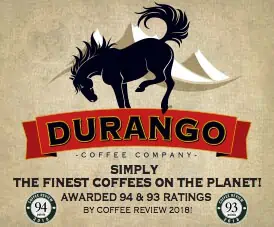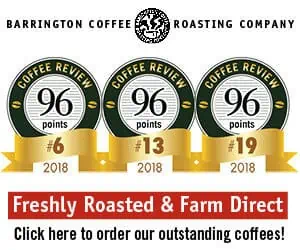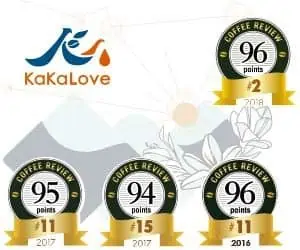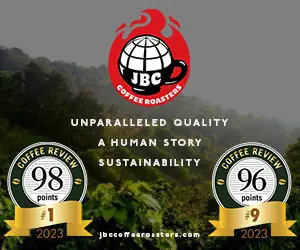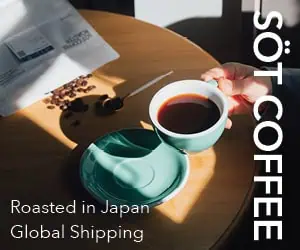Courtesy of Kenneth Davids, 21st Century Coffee: A Guide
For over 150 years Brazil has produced more coffee than any other country in the world. Coffee prices worldwide fall and rise on the slightest whisper of good news or bad concerning Brazil’s next coffee crop. Brazil also is among the world’s most technically advanced coffee producers.
But for buyers of high-end single-origin coffees, Brazil shrinks to something smaller than, well, Panama. In 2018, for example, Brazil produced around 37% of the world’s coffee. In that same year Panama produced considerably less than 0.1% (i.e., one-tenth of one percent) of the world’s coffee. Nevertheless, Panama coffees offered as single origins are far more likely to appear on lists of upscale coffee companies than are Brazil coffees. For example, in an average year, five times as many reviews of 100% Panama coffees appear on the Coffee Review website than do reviews of 100% Brazil coffees.
Nevertheless, Indispensable.
However, Brazil produces some very fine high-end coffees. Furthermore, good, no-nonsense Brazil coffees in the basic “Brazil Santos 2/3” style are quite attractive to many coffee drinkers, and fine espresso blends all over the world depend on their gently resonant, chocolate-and-nut profiles.
The problem is, Brazil does not produce coffees that set off sensory fireworks. Brazil produces nothing with the exhilarating sweet-dry elegance of a fine wet-processed Kenya, or the dazzlingly aromatic intricacy of a Panama Geisha, or the lush floral fruit of a good Ethiopia dried-in-the-fruit natural. But it could be that the fireworks are on their way, as some Brazil producers continue to experiment and refine at the top end of the market.
The Traditional Brazil Cup
This would be the style of dried-in-the-fruit or natural coffee in which Brazil traditionally specializes: round and low-toned in acidity, medium in body, chocolaty and nutty in aroma and flavor. This coffee type is prone to taints (rotten ferment, hard or medicinal, musty) owing to mass picking and drying, but solidly satisfying taint-free lots are produced on a regular basis.
Typical Brazil Terroirs
Most Brazil coffee is grown on plateaus or rolling hills at elevations of around 2,600 to 4,000 feet (800 to 1,200 meters), moderate elevations that probably mainly account for the mild acidity typical of good Brazil coffees. Soil types vary. The most remarked on are the terra roxa (red earth) soils of the Mogiana and parts of the Sul de Minas growing regions, soils that may perhaps contribute to the plump sweetness characteristic of the best Mogiana and Sul de Minas coffees.
Wet and dry seasons in the most prominent Brazilian growing regions are well-defined (or at least were before the intensification of global warming), meaning coffee trees blossom and fruit ripens fairly uniformly and the traditional Brazilian practice of drying coffee in the fruit on large patios can take place during dry harvest seasons, relatively free of rot- and mildew-inducing rains.
Farms in most classic growing regions, like the rumpled hills and valleys of Sul de Minas and Mogiana, usually manage without irrigation, but farms in the newer growing regions, like the high, relatively dry plains of Cerrado and Bahia State, usually require irrigation.
Frosts and Droughts.
Frosts (black, which kills the trees, and the more common white, which destroys a crop but doesn’t kill the trees) were once frequent in traditional Brazil growing regions, sending coffee prices worldwide on a roller coaster. Devastating frosts are less frequent now because Brazil coffee production has tended to move north, away from the temperate zone and toward the equator.
Brazil Varieties
Traditional Varieties.
Brazil grows a fairly wide range of traditional varieties of Arabica, most of which are typically harvested and sold mixed together. The main exception may be the heirloom Bourbon, which once dominated the coffee fields of Brazil, but which has been largely replaced by more compact-growing varieties. Nevertheless, lots comprised of 100% pure Bourbon, particularly the admired yellow-fruited cultivar, often reach the specialty market. These on occasion can be splendid: round, resonant and gently pungent. Typica/Bourbon all-Arabica hybrids are popular in Brazil. They include the tall-growing Mundo Novo and the popular, compact-growing Catuaí. In my experience, Catuaí in particular can produce very fine, balanced coffees in Brazilian growing conditions. Although the giant-beaned Maragogipe was first discovered and selected in Brazil near the town of the same name, it is currently almost never grown in Brazil. Most Maragogipes are produced on a small scale in Central America, Mexico and Colombia.
Newly Introduced Varieties.
Modern hybrids that incorporate genetic material from Robusta include Catimor and Icatu, a Bourbon/ Robusta cross that in turn was crossed with the all-Arabica hybrid Mundo Novo. Icatu apparently can produce an impressive cup on Brazil farms, although coffees from the Bourbon and Catuaí varieties continue to dominate Brazilian green-coffee competitions. It does not appear that Brazil overall has made a major commitment to Robusta- incorporating hybrids, however, suggesting, perhaps, that Brazil’s reputation for stressing industrial practices over coffee tradition has been overstated.
On the other hand, there appears to be little interest in Brazil in planting exotic varieties admired solely for their distinctive cup character, like Geisha/Gesha or SL28, perhaps owing to their unsuitability for the relatively low elevation Brazilian terroirs.
Brazil Processing Methods
Traditional Methods.
The classic processing method associated with Brazil is the dry method: The coffee fruit is simply picked and spread to dry on concrete patios for as long as several weeks, and the fruit residue is removed later after drying. Patio drying may be supplemented by machine drying. At one time the commodity industry labeled such simple, dried-in-the-fruit coffees as unwashed, but now they are almost always called natural-processed, a term apparently invented by Brazilians, who doubtless were fed up with the negative connotations of the term unwashed.
Newer Non-Traditional Methods.
Brazilian producers appear to be passing on differentiating their coffees by planting exotic, cup-distinctive varieties of Arabica, but they are more than compensating by innovating with processing method.
In the 1990s Brazil popularized two processing methods that fall between the dry or natural method on one hand and the traditional wet or washed method on the other. The first is called pulped natural in Brazil (in Central America, it’s called either red honey or black honey, in which only the skins are removed from the beans and they are dried while still coated in sticky fruit mucilage. The second is usually called semi-washed in Brazil (or in Central America, yellow honey): The skin and some of the mucilage, but not all, is removed by machine before drying.
Brazil Growing Regions
Starting in the south and moving north, Paraná is the oldest and most traditional Brazilian growing region, though it produces very little coffee of specialty quality. Mogiana, in Sao Paulo State, is arguably the most traditional of Brazil growing regions, and is particularly admired for the suitability of its round, sweet, fullish-bodied coffees for espresso. Adjacent to Mogiana, in the state of Minas Gerais, Sul de Minas produces more coffee than any other Brazilian region and in general more coffees of exceptional quality (over the years Sul de Minas coffees have done particularly well in green-coffee competitions). Matas de Minas (Forests of Minas) and the adjoining producing region in the neighboring State of Espírito Santo are traditional growing regions, often with relatively high elevations and a preponderance of smaller, artisan farms, some of which produce small lots of outstanding coffees that also do well in competitions.
Cerrado or Cerrado Mineiro consists mostly of high-elevation plateau with ideal climates for sun-dried coffees: rainy summers and dry harvest months in May to August. Large, sophisticated Cerrado farms produce impressive volumes of very consistent coffees that also often excel in Brazil competitions. Finally, among the new producing regions in the north in Bahia State, the Chapada Diamantina region has produced some fine coffees over recent years. Bahia State generally, though, is associated with anonymous, industrial-scale farming.
Brazil Coffee Ratings and Reviews
Click here to view ratings and reviews of coffees from Brazil.

